Before the pandemic, Laetitia Gorra was director of interiors for the Wing, the now-defunct women-centered coworking brand. She spent a lot of her time commuting from her home in New York’s Westchester County to the Wing’s flagship in Manhattan. But then COVID-19 hit, and she set up her own interior design studio, Roarke, with cofounder Sarah Needleman.
“A big silver lining for me was being able to work from home, and being able to spend more time with my children,” Gorra says. “But fast-forward three years of being stuck in your house, and I needed a space where I could separate home and work again—but without having to get on a train and spend two hours commuting every day.”
What Gorra decided to do may come as a surprise: In December 2023, she opened up a micro-coworking space called the Studio in a building on her property. “It happened very organically,” she says, explaining that she met a group of women during the pandemic who lived in her neighborhood, the village of Hastings-on-Hudson, and began meeting weekly to talk and share ideas. They, like her, felt unproductive at home and wanted a quiet place to work without the time—and costs—of going into the city.
When a space on Gorra’s property freed up, it seemed like the perfect opportunity to create a convenient, peaceful coworking spot for the new group of friends (it accommodates five people comfortably) as well as to showcase Roarke’s design language.
“There’s something incredibly homey and warm about it,” says Gorra, who chose a soft orange velvet sofa, as well as local art and a communal dining table for the space. “You don’t feel like you’re walking into a large, oversized sterile workspace.” People aren’t there 9 to 5—they come for maybe three hours per day, or for two days a week, fitting it into their schedules as part of the new, more hybridized working culture.
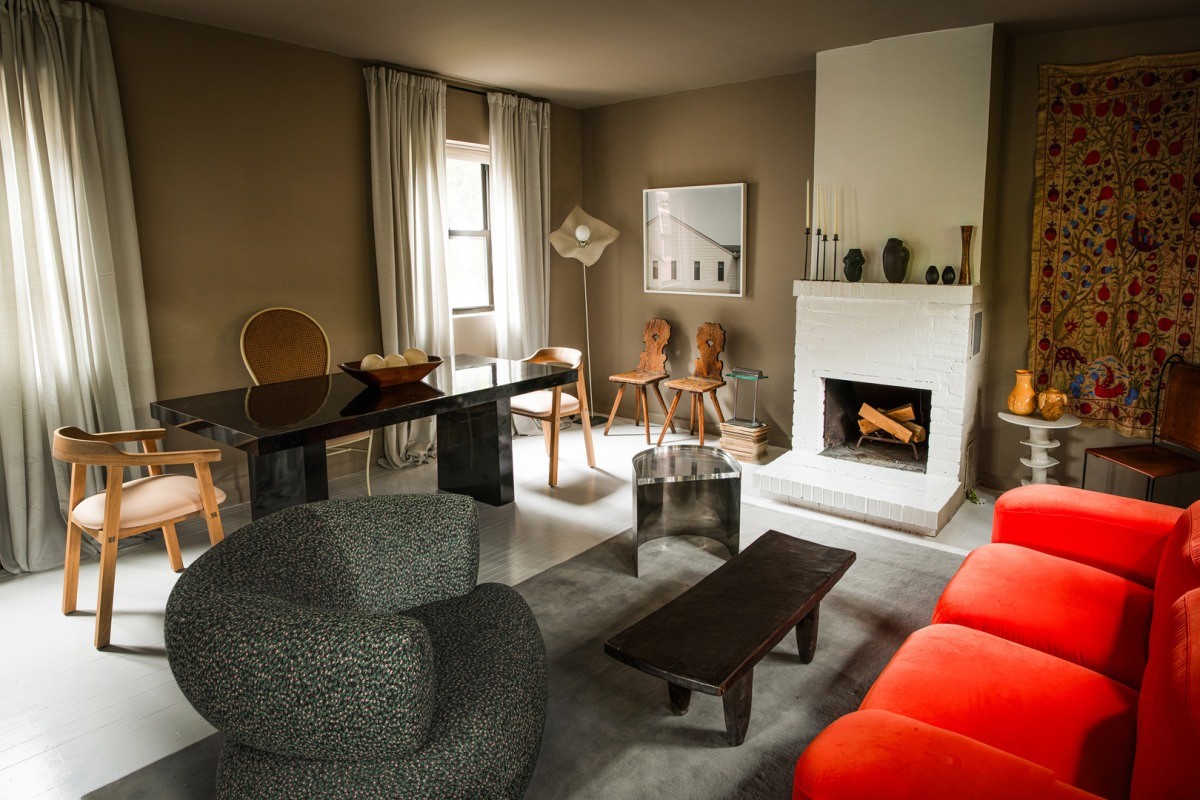
Although the space is tiny, the opening of the Studio reflects a growing trend in coworking: a shift to the suburbs. Demand for coworking space outside of downtown urban locations has been growing steadily in recent years. It’s an aftereffect of both WeWork’s high-profile bankruptcy and the rise of more flexible working practices, which accelerated dramatically during the pandemic. People want to work close to where they live, and more of them have been moving to suburbs and small towns. According to a 2023 report by workplace provider IWG and design firm Arup, outbound migration from major U.S. cities to smaller communities has increased 59% since 2020.
Serendipity Labs, a shared workplace firm focused on suburban markets, told The New York Times in November that it was seeing rapid growth in response to increasing demand in these locations. TailoredSpace, a coworking startup in Southern California that also focuses on suburban workspaces, recently announced that it plans to double its portfolio throughout 2024 in response to demand. And IWG, which provides coworking spaces globally, has been expanding significantly in the suburbs.
“We saw the demand for the ability to work close to home accelerate massively after COVID,” says Jamie Hodari, founder and CEO of coworking space provider Industrious, noting, “70% of our new location launches this past year and upcoming year are outside central business districts.” The ratio has flipped since before the pandemic, when only 30% of launches were outside of downtowns, Hodari says, adding that many of Industrious’s new coworking spaces cater to people in suburbs, smaller towns, or less centrally located urban neighborhoods who want a “third place”—a location outside of their home and their office—where they can work.
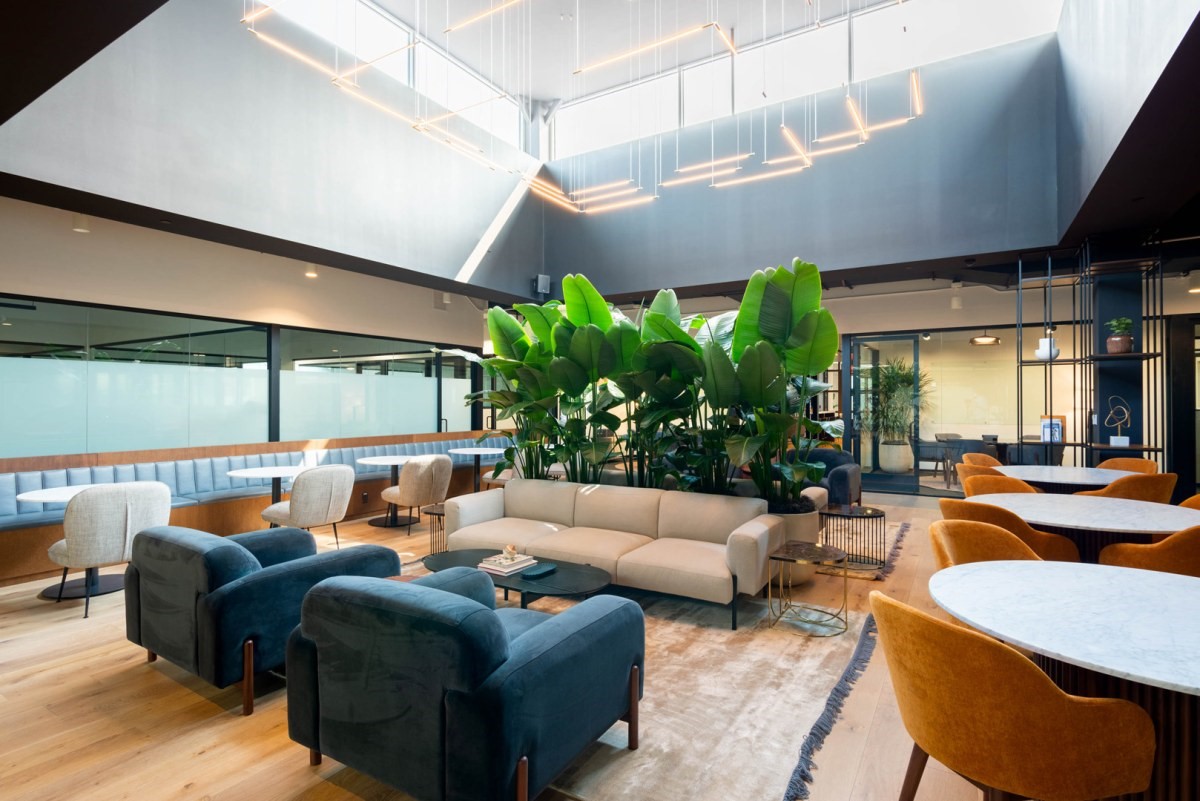
Unlike Gorra’s micro-coworking space, Industrious’s non-downtown outposts are big enough to host teams and individuals alike. “They are smaller than the central business district locations, but maybe 15,000 to 20,000 square feet versus 50,000 to 70,000 square feet,” Hodari says. Nevertheless, he adds, the vibe is definitely different: “We design them in more warm and welcoming ways. You want something that feels cozy and delightful to the people who show up every day—it’s less about wowing clients.”
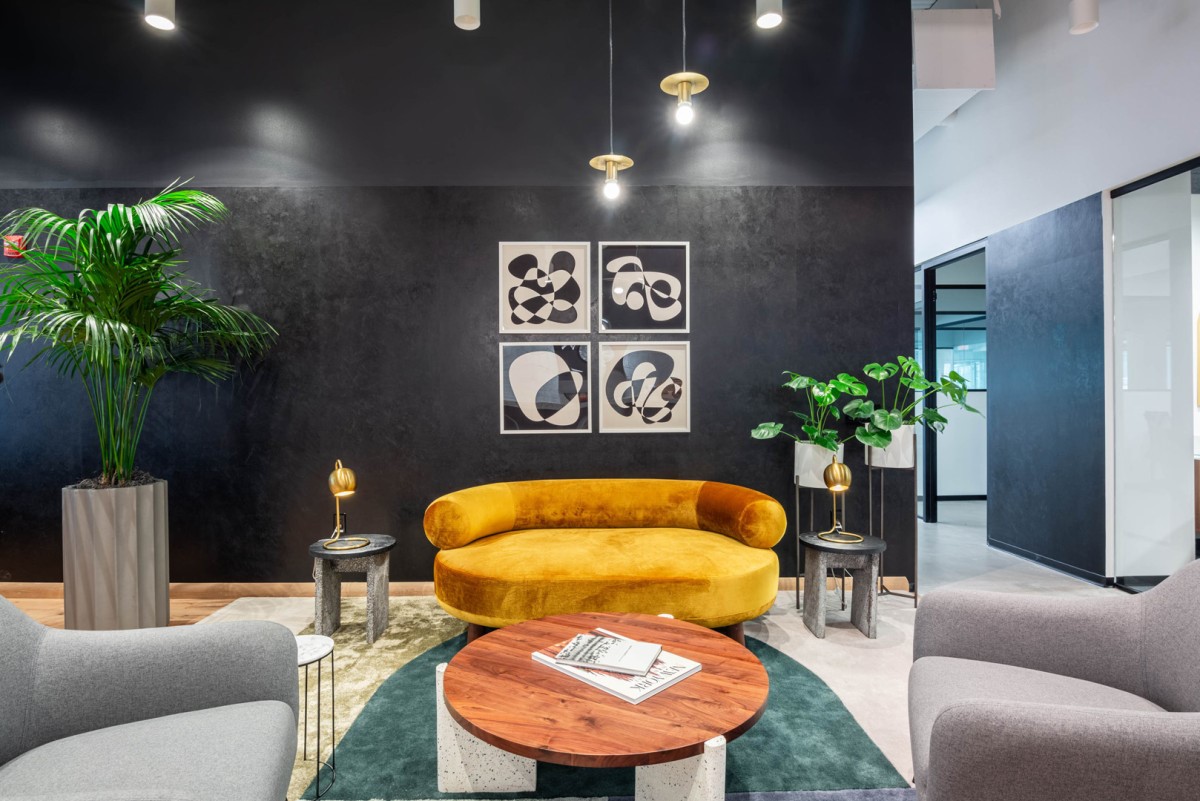
People working in neighborhood locations want a workspace they can “stitch together with the rest of their life,” Hodari says. Where possible, these spaces are close to street level rather than, say, on the 50th floor of a skyscraper. He cites an Industrious location in Pasadena, California, that is on the main street, occupying a former retail space. Convenient locations like these support an experience of popping in for a few hours at a time between other tasks. “The dream is to have them on walkable main streets,” he says.
It’s a vision being put into action across the ocean in the U.K. as well, where a startup called Patch is opening coworking spaces on main streets of suburban centers and small towns, championing the post-pandemic concept of “work near home.”

“For too long we’ve been assuming that people have to come into some kind of centralized factory to be productive,” says Patch CEO Freddie Fforde. “I think that’s outdated in a world where you can be productive and engaged no matter where you are.” Fforde talks about “matching up opportunity to talent,” adding that there are plenty of coworking opportunities in major cities but not so many in smaller communities. Patch has so far opened three locations in neighborhoods on the periphery of London that have historically been seen as commuter hubs. Going forward it hopes to move far beyond the reaches of the capital.
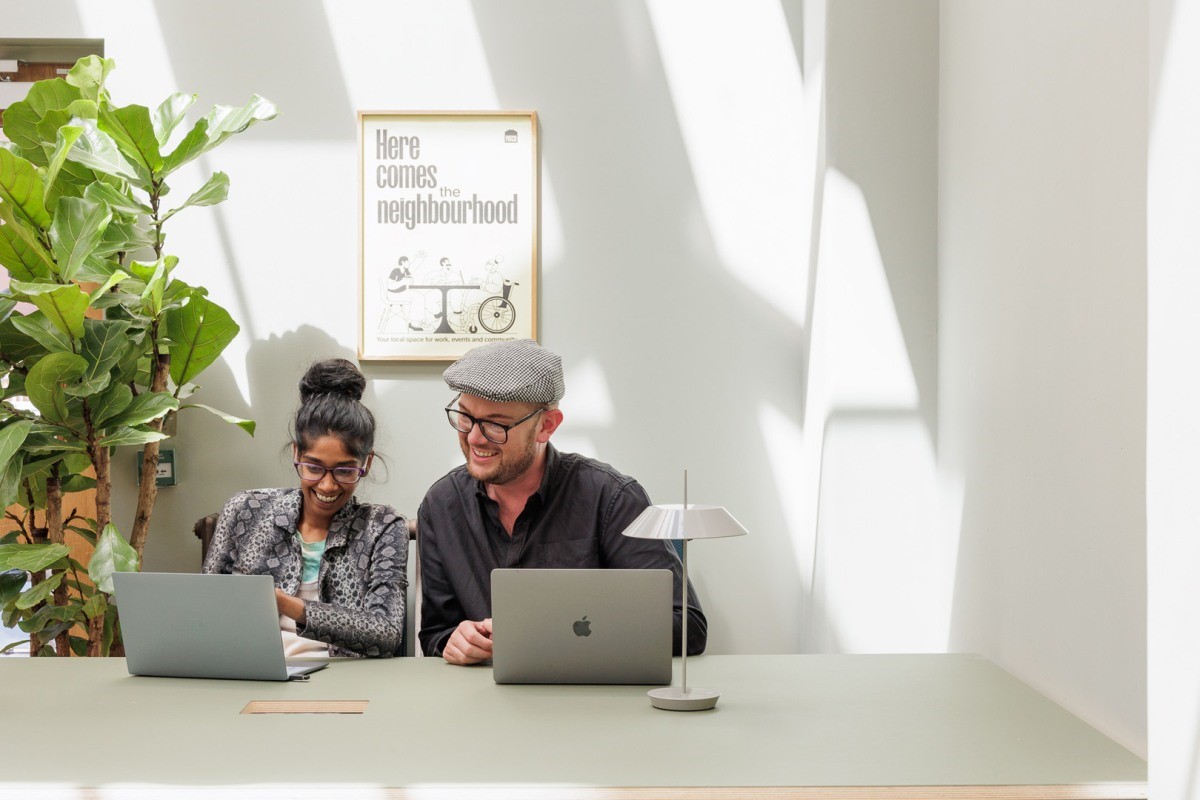
Although Fforde founded Patch in 2020, he insists it’s not a pandemic story. Rather, it emerged from the broader impact technology has had on our lives. “Everyone buys things online,” he says, adding that brick-and-mortar shops have consequently closed up and left main streets with increasingly vacant storefronts. Patch wants to provide a convenient place for people to come together and work, but it also wants to reactivate main streets, making coworking a visible part of communities.
It’s a sentiment shared by Gorra, who is toying with the idea of opening more micro-coworking spaces on main streets close to her Hudson Valley village. “In the suburbs of New York there are so many vacant retail spaces on main streets that are not very large. Why not work in the center of town and still be very close to your house? I think that would be a great thing to have,” she says, adding that there aren’t huge overheads in these situations.
Family-friendly facilities
Shifting work from the city to the suburbs has a major impact on suburban working parents. By removing the hours spent on commuting, parents can spend more time with their kids and fit coworking around childcare. “For me, as a mother, what was always difficult traveling into the city was that I couldn’t drop my kids off at school,” Gorra says. “You miss out on those little moments.”
For Fforde, one of the reasons for establishing Patch was reflecting on his own mother’s experiences. “I witnessed the disadvantage my mum went through as a single parent when she was raising me—to conform to this concept of 9 to 5 in the office,” he says. “As a result, childcare was very difficult.”
Patch’s locations are family-friendly, with “kids’ corners” where children can play with toys. The company’s intention is to go beyond coworking convenience to become multipurpose anchors in communities. “We center the business model around the workspace because it’s the biggest need and most reliable source of income,” Fforde explains. But Patch spaces also have accessible ground floors that anyone can walk into, with cafés, bookshops, lending libraries, and event spaces that local groups and organizations can use. Keeping people in their local neighborhoods, Fforde says, has both social and economic benefits that include forging bonds among community members, solidifying support networks, and bolstering local businesses.
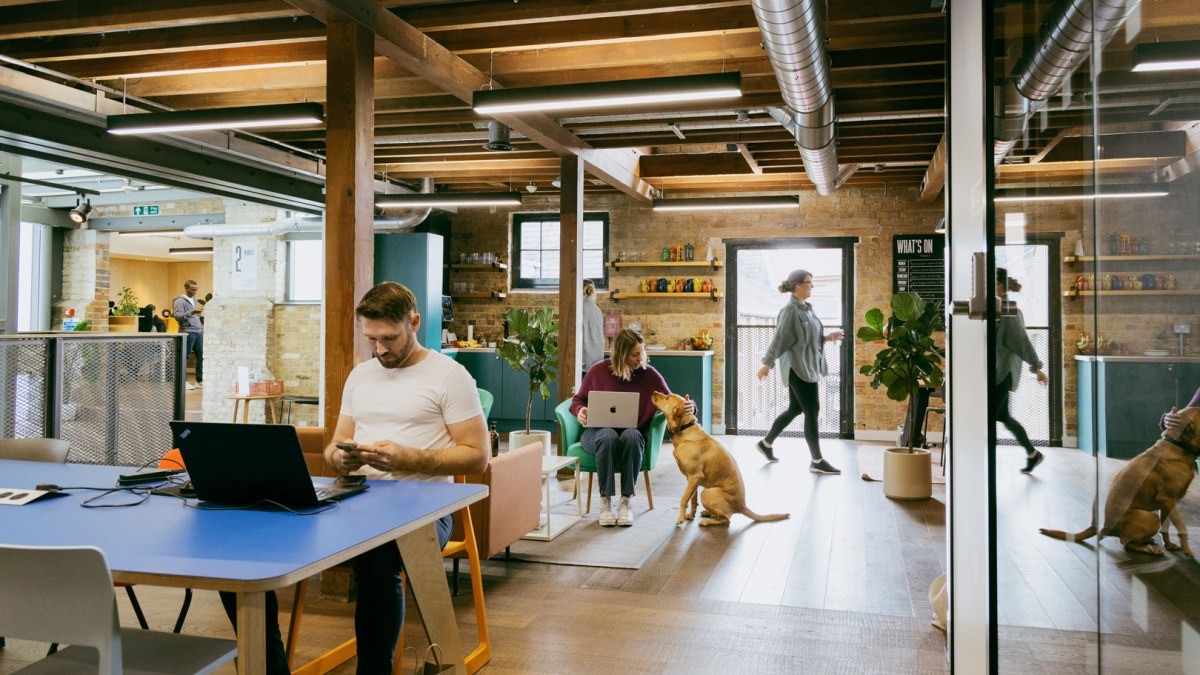
Patch’s vision is more akin to a community center, and it shows just how much the coworking model has changed since the days when WeWork offices dotted every downtown block. Fforde believes that WeWork’s demise wasn’t about coworking—it was about the exorbitant rents the company was paying. “WeWork’s failure was not a product problem, it was a business model problem,” he says. “There’s nothing wrong with coworking.”
Industrious’s Hodari echoes this, identifying WeWork’s problem as one of long leases and liabilities. “Our fixed liabilities are about 30% of our revenue; WeWork’s were at one point 85% of their revenue,” he says. “No business on earth can survive that.” Both Hodari and Fforde are confident that the spaces WeWork might vacate as it necessarily downsizes—most of which are in central business districts—will continue to be occupied by coworking, just run by different brands.
Hodari insists those downtown coworking destinations remain vital for many workers, and Industrious’s locations in the urban core are “doing great,” often working in concert with the neighborhood-level locations: Teams might use suburban outposts near where they live for day-to-day work but go downtown for big meetings and face-to-face appointments with important clients. This shift is a reflection of how workers want to spend their time—and it’s good news for the coworking industry at large.
“I think a lot of people, because of the WeWork bankruptcy, don’t know that this is the golden era for coworking right now,” Hodari says. “This is the era of maximum demand that most providers have ever seen.”
(40)